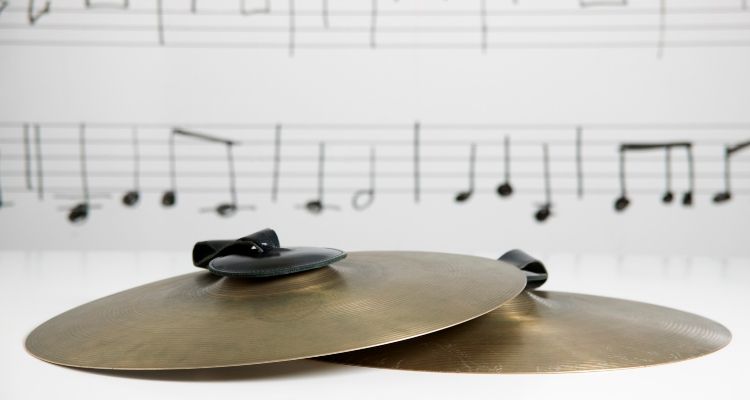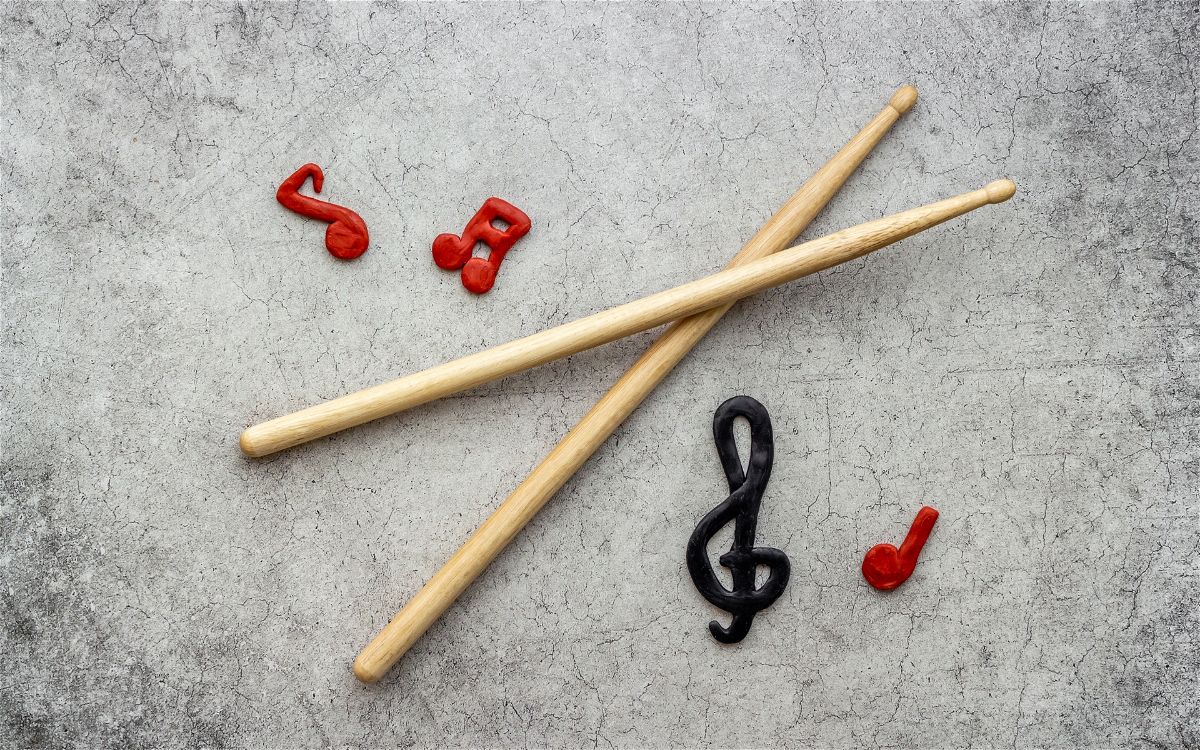If you play another instrument and want to know whether drums are similar, you may be wondering if drum kits have notes like a piano or guitar.
It’s actually quite a common question that I regularly get asked. The answer is quite straightforward – no, drums do not have notes. However, there are far more factors to look into and explain.
So, I’m going to break down why drums don’t have notes and explain the difference between a drum set and an instrument like a piano. I’ll also explain how to learn how to play drums, even though there aren’t any typical pitched drum notes to follow.
Contents
What Are Notes?

A note is a frequency that an instrument produces. When instruments produce the same frequencies that match in pitch when you play them, they’re referred to as melodic instruments.
Melodic instruments are things like guitars, pianos, saxophones, and violins. When someone tells you to play the note C on all of these instruments, you’ll be able to play it, and they’ll all produce the same frequency and pitch.
This is how melodies and chords are created, as instruments have a range of frequencies that you can get out of them to make music.
In standard Western music, there are seven main notes to play on these instruments:
- A
- B
- C
- D
- E
- F
- G
There are also half steps from most notes, and these are referred to as sharps or flats:
- A# or Bb
- C# or Db
- D# or Eb
- F# or Gb
- G# or Ab
Do Drums Have Notes?
Since drum kits don’t produce the same frequencies and notes as all those other instruments, they’re not considered a melodic instrument. A drum kit falls under the category of non-pitched percussion.
You get pitched percussion instruments that actually can produce notes, including xylophones, marimbas, and timpani.
While drum kits can’t inherently play melodies, they produce notes of their own. However, we don’t typically assign note names to these.
We just see some pitches as higher or lower than others. For example, the high tom produces the highest pitch on the kit, while the floor tom and bass drum produce the lowest.
You may be able to match intervals between different drums, but not too many drummers actually do this. This is when you accurately calculate how many steps of pitch there are between the drums, making them arguably sound more musical when you play around the kit.
Can You Tune Drums?
Yes, you can tune drums, but it’s not the same as tuning a melodic instrument. When you tune a guitar or piano, you’re basically changing it so that the pitches and frequencies are accurate. This makes the instrument sound like it fits when playing with another instrument.
When you tune drums, you’re just changing how high or low each drum sounds. You’re also controlling how long the drum resonates.
You tune drums by tightening or loosening the drumheads on either side of the shell. When a drumhead is tight, the drum produces a high pitch. When it’s loose, the pitch will be lower.
With that said, I’ve always found tuning a drum kit much harder than tuning another instrument. You can easily tune a guitar with a tuner, and it’s either in tune or not. When tuning a kit, it’s a whole process of choosing how you want it to sound, so there’s a lot more room for error.
Learning to Play Drums

When picking up a melodic instrument, you learn it by memorizing how to play each note and then mixing them together to play chords or melodies.
If drums don’t have pitched notes, how do you learn to play them? You’ll mostly be focusing on rhythms, but here’s a bit of a more in-depth explanation.
Note Values
Drums have a heavy focus around note values and subdivisions. You learn to play drums by understanding what subdivisions are and then counting while you play different rhythms and patterns on the kit.
For example, a common 8th note groove has eight notes per bar, and you play different parts of the kit while counting those eight notes.
Read Drum Notation
Drumming also has notation and sheet music, but it’s not quite the same as what you get with melodic instruments. Melodic instruments have placements on a staff that tell you which note to play.
With drum music, the rules are different for note placements. For example, instead of it being a C in the music, drum notation tells you to play a snare drum. Every other part of the kit has a specific placement as well.
Changing How Drums Sound
Apart from some drums sounding higher or lower, another thing that affects the sound is what the shells are made from. You get various wood types that change the timbre that the drums produce.
A birch drum kit sounds quite aggressive, while a maple drum kit sounds more balanced.
One of the best things about drums is that you can easily change how your kit sounds with tuning and muffling. However, the subtle tonal differences between shell types can’t really be changed.
What About Cymbals?

Cymbals also don’t have melodic notes. They’re even less versatile than drums when it comes to changing how they sound.
Cymbals are designed to have one specific sound, and you need to get another cymbal if you want a different sound. This is why having good cymbals is so important, as you can’t improve how bad cymbals perform.
Final Thoughts
The fact that drums don’t have melodic notes actually makes them a bit easier to learn to play, in my opinion. You don’t need to worry about playing wrong notes, as it won’t sound as bad if you hit the wrong drum when you’re playing a song.
You just need to worry about keeping steady time and changing the tempo at which you play.
A lot of people don’t even know how to read drum sheet music, as you can simply learn by counting and running through subdivisions in your head.









